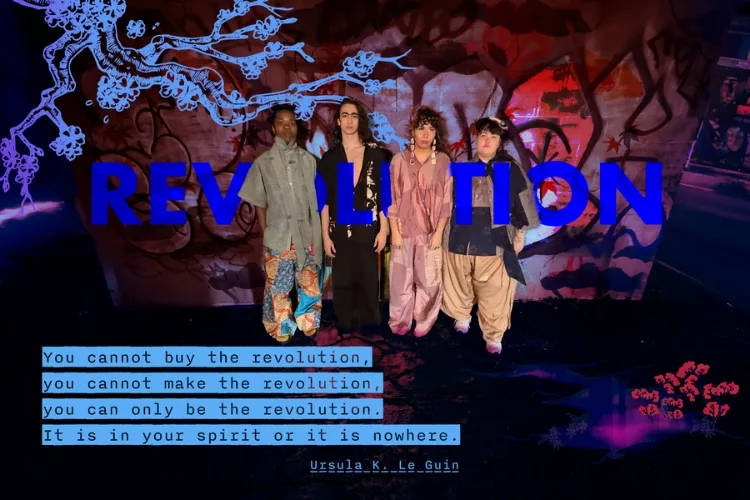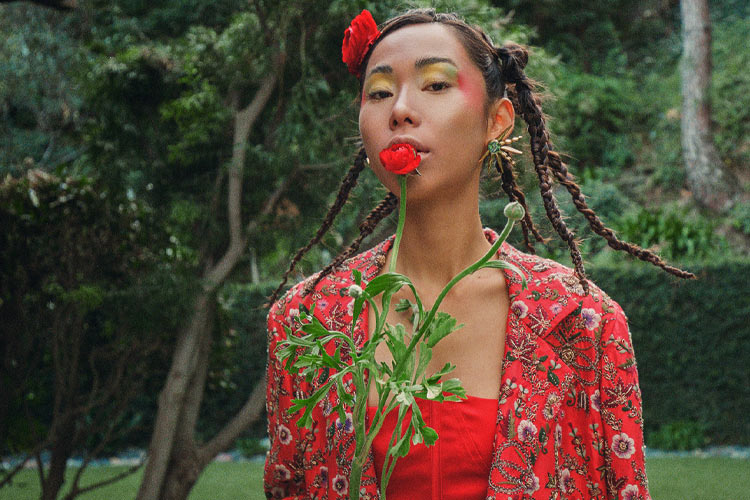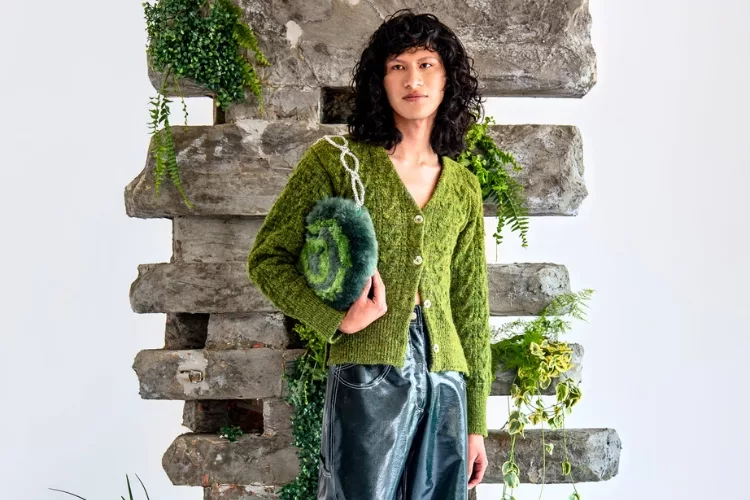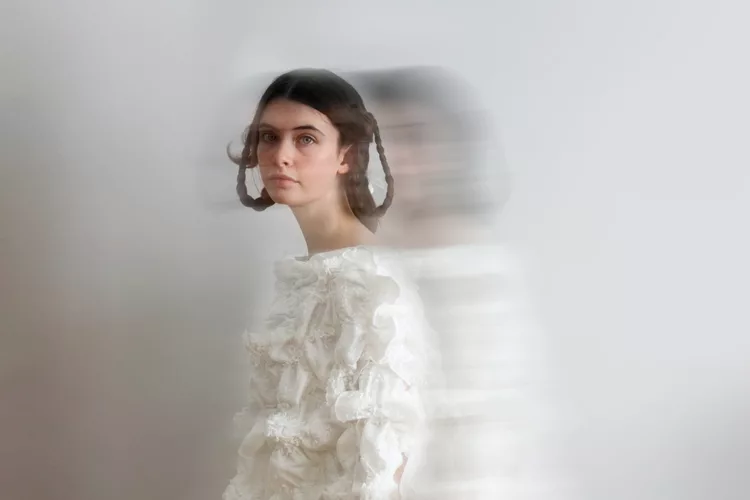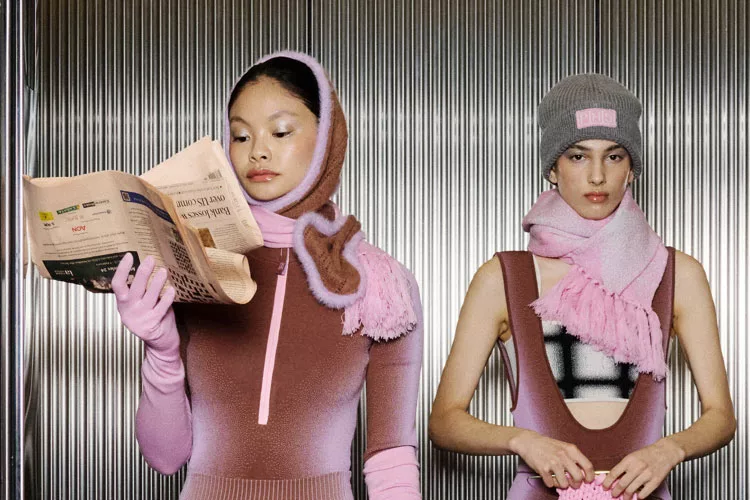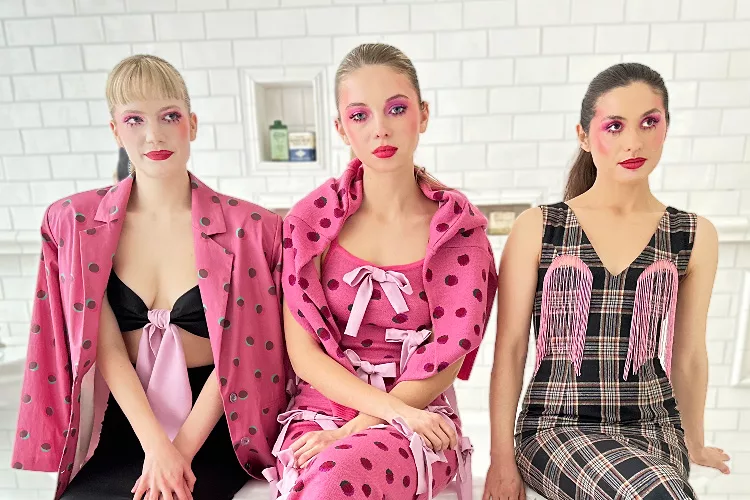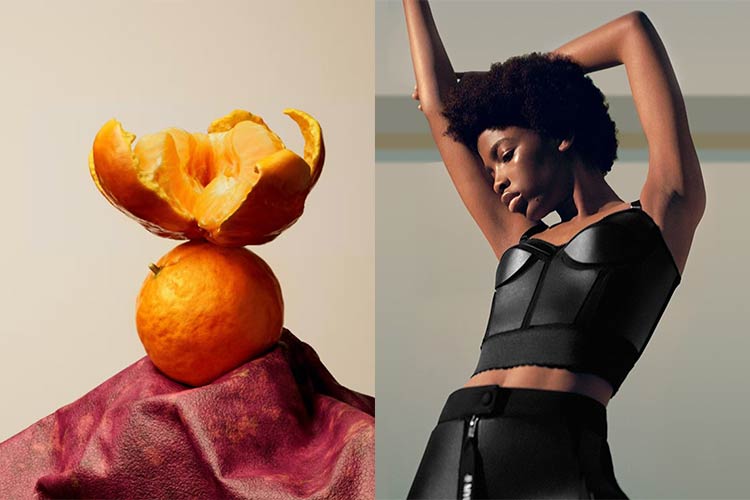
Synthetic alternatives – How Biotech and biomaterials are changing how we make clothes for the better
Good news for us earth inhabitants: the fashion industry is picking up serious steam in counteracting its environmental effects in textile production, with the help of biotechnology. There are more innovations in the sustainable textile space than ever before. Remember how back in the early 2010s when companies slowly started taking carbon footprint reduction into consideration, the only good options were all cotton and hemp?
We have to admit that while plant-derived fabrics are perfect for comfortable pajamas and casual shirts, they don’t make good leggings or swimsuits. These fibers lack performative functions, such as water-proof, and stretch, that synthetic fibers have. So to be 100% guilt-free when shopping for clothes, you needed to give up everything synthetic, i.e. everything shiny, stretchy, or fuzzy. A task not many could do.
But that’s so 2018. In 2022, planet positive fashion no longer has to be a trade-off for style! Textile scientists have found ways to bridge the gap between green technologies and consumer’s demand for performance and style. In laboratories across the world algae is grown for knit production, mushroom for leather, and bacteria for silk. Biotechnology has allowed for the creation of plant-based textiles with properties commonly found in those made from plastic or animals.
What’s so great about biotechnology + fashion?
What makes these even better is that these lab-grown textiles do not require a ton of soil, water, air, or fertilizer to produce. That means in terms of carbon footprint, they really do champion over natural fibers like cotton. So, if we grade degree of sustainability on the basis of carbon footprint minimization, there really isn’t anything better than the following new materials.
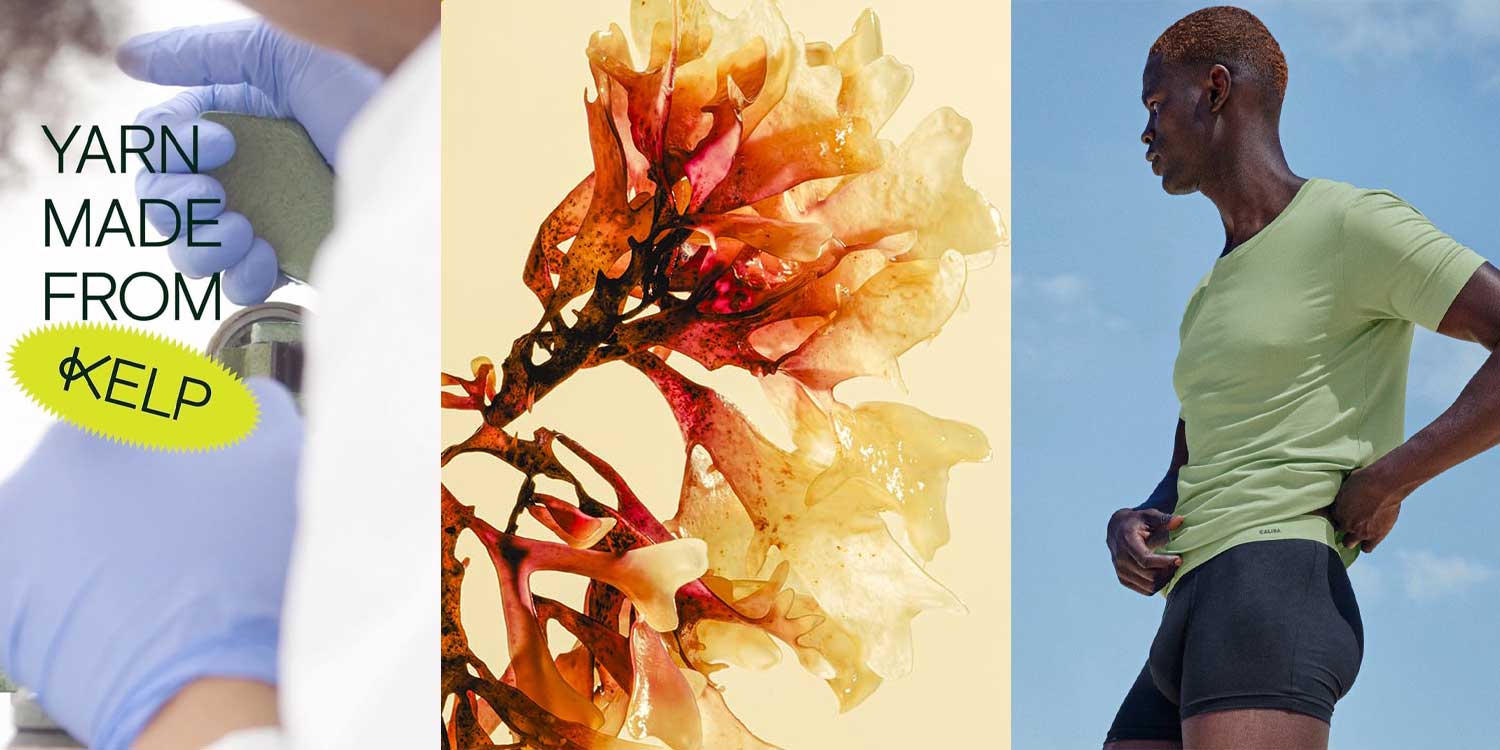
Algae
Algae is the scientific term of all the plants that we usually call seaweed. Here’s the thing you need to know about algae: they are some of the most low-maintenance plants on earth. These seaweeds are even less fussy than weeds: they don’t even require fresh water or soil to grow. Their humble existence only requires light, water, and the atmospheric chemical compound that we are trying to get rid of – CO2.
Recently, scientists have recognized the potential of algae, especially microalgae, in textile manufacturing. Microalgae are unicellular, microscopic algae invisible to the naked eye. Because they exist in a single cell, they can be interlaced into the fabric to improve its functions. Algae’s inherent softness and intrinsic minerals makes them perfect for hugging knits. Plus, they are also antiallergenic!
Low-cost and fast-growing, microalgae is ideal for mass production and commercialization. Textile companies around the world have been developing ways to create more algae-based products. In Germany, Smartfiber AG’s seaweed-infused cellulose fiber SeaCell, which contains 19% seaweed content, has been made into trial products by performance brands like Lululemon, and Pangaia.
In the US, Algix blazes the trail for footwear and accessories made from algae blooms, with big-name partners such as Vivobarefoot, adidas, Puma, and Native. Another company, Algenist, has been making investments to explore the potentials of an even more abundant resource – macroalgae – in textile production. Macroalgae are the seaweeds and kelp that we can actually see, and they are abundantly available along our coastlines. To scale kelp into biodegradable yarn, another investment of over $2 million has been made to AlgiKnit, now going under the name Keel Labs.
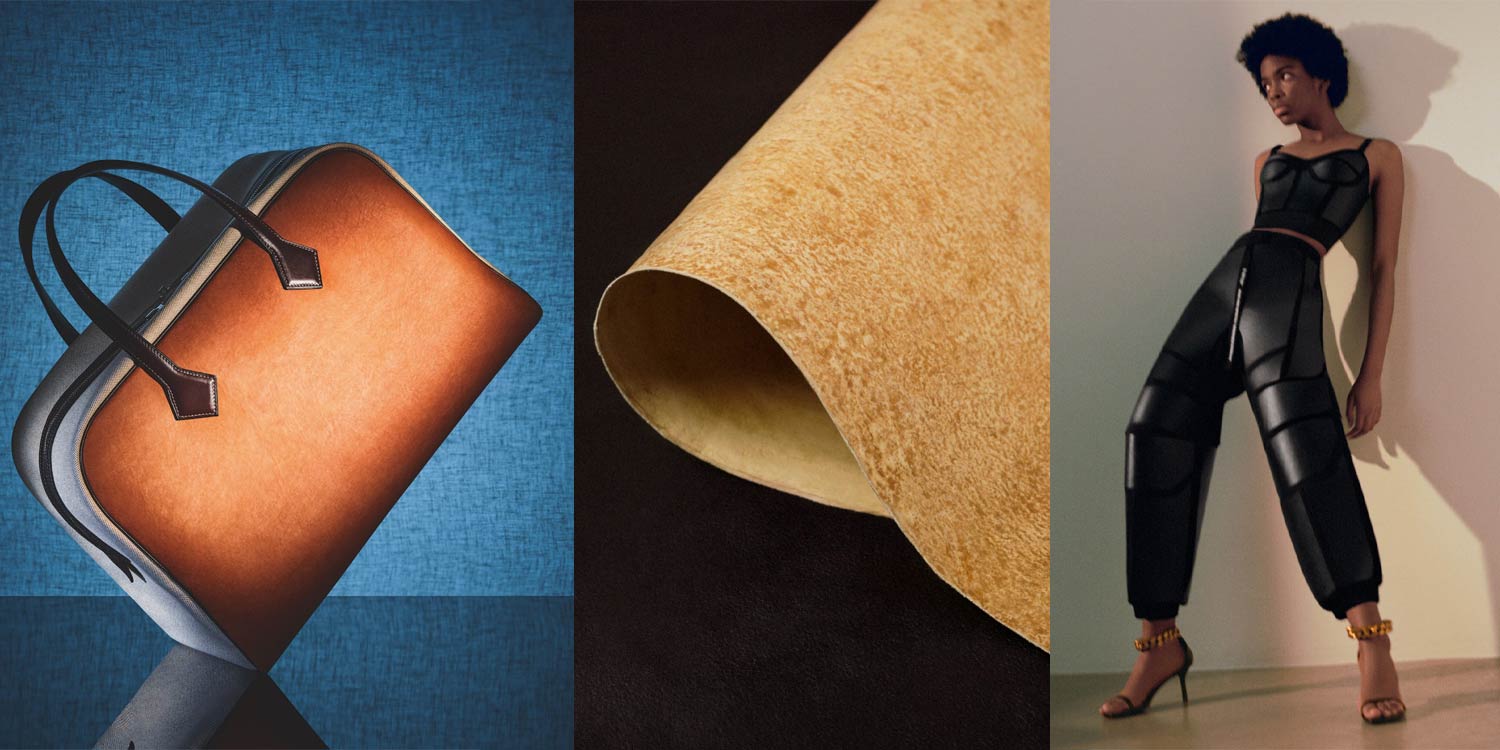
Mycelium
One of the things we miss most when switching to sustainable fashion is leather. Yes, vegan leathers are available, but they are either mostly or entirely made out of plastic, and they just don’t have the softness and suppleness that real leathers have. Enter: mycelium leather, our most leather-like vegan leather to date.
Mycelium is the underground thread-like system of fungi. From these threads, scientists are creating a vegan alternative that is akin to animal leather. Here’s how: they cultivate mycelium on mats to later harvest foam-like sheets, then process and dye these sheets. Compared to the carbon-intensive process of harvesting and processing animal skins, growing mycelium only takes a few weeks and leaves minimal carbon footprint. Plus, this material can totally be custom-made. As we have control all over its creation, mycelium leathers can be made with any type of finishes we wish them to have.
Mycelium leather is a well-developed technique and has been tested on products by the conglomerate Kering, and brands like Stella McCartney, adidas, and Lululemon. Our focus now is to scale up mycelium leather production. Thanks to a total funding of $100m,US-based company Ecovative has been able to fast-track the production of its algae-based leather on an industrial scale. Ecovative is also co-developing a new type of vegan hide in partnership with Vivobarefoot, Pangaia and Fashion for Good. Similarly, Bolt Threads has partnered with a Dutch firm to scale up its Mylo Unleather. And Hermes-backed MycoWorks has raised $125m to build its full-scale production plant in South Carolina. Outside of the US, Indonesiaʼs Mycotech Lab has successfully piloted its naturally dyed Mylea for brand watches, wallets, shoes and bags.
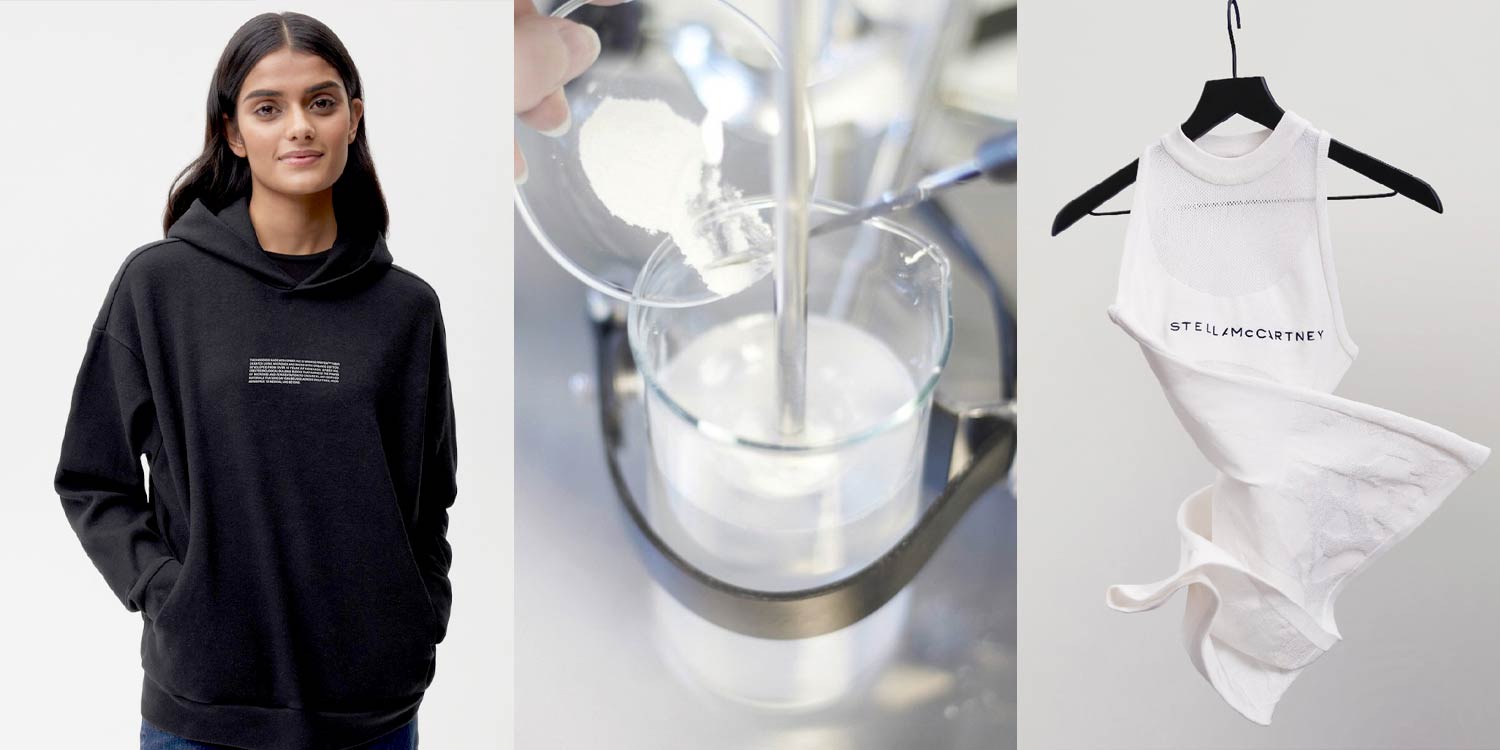
Biosynthetic silk made from yeast and bacteria
Aside from algae-based knits, another vegan alternative is biosynthetic silk. Yes, biotechnology, more specifically genetic engineering, has made lab-grown silk possible. The difference is that these are weaved by yeast and bacteria, which are engineered using spider DNA. Not silkworms. First, silk protein is created by adding silk genes into these microorganisms. Then the resulting fibers are spun into super thin threads in a process that mimics a spiderʼs spinneret. The result is a product that closely resembles spiders’ silk – a material that is strong, stretchy, nontoxic and biodegradable – a perfect alternative to petroleum-derived fibers such as nylon in making silk.
Although it was created in 2007, biofabricated silk has only been introduced to the market in 2020. Japan-based company Spiber and Germany-based AMSilk are the first two innovators in the field. Spiber has collaborated with The North Face. They used their brewed protein in a test product called the Moon Parka. AMSilk’s Biosteel is used for adidas’s Futurecraft shoes. Opportunities for scaling are opening up for bio-based silk. US company Bolt Threads recently raised $50m to scale its Microsilk. It has also collaborated with Patagonia and Stella McCartney in realizing this project.
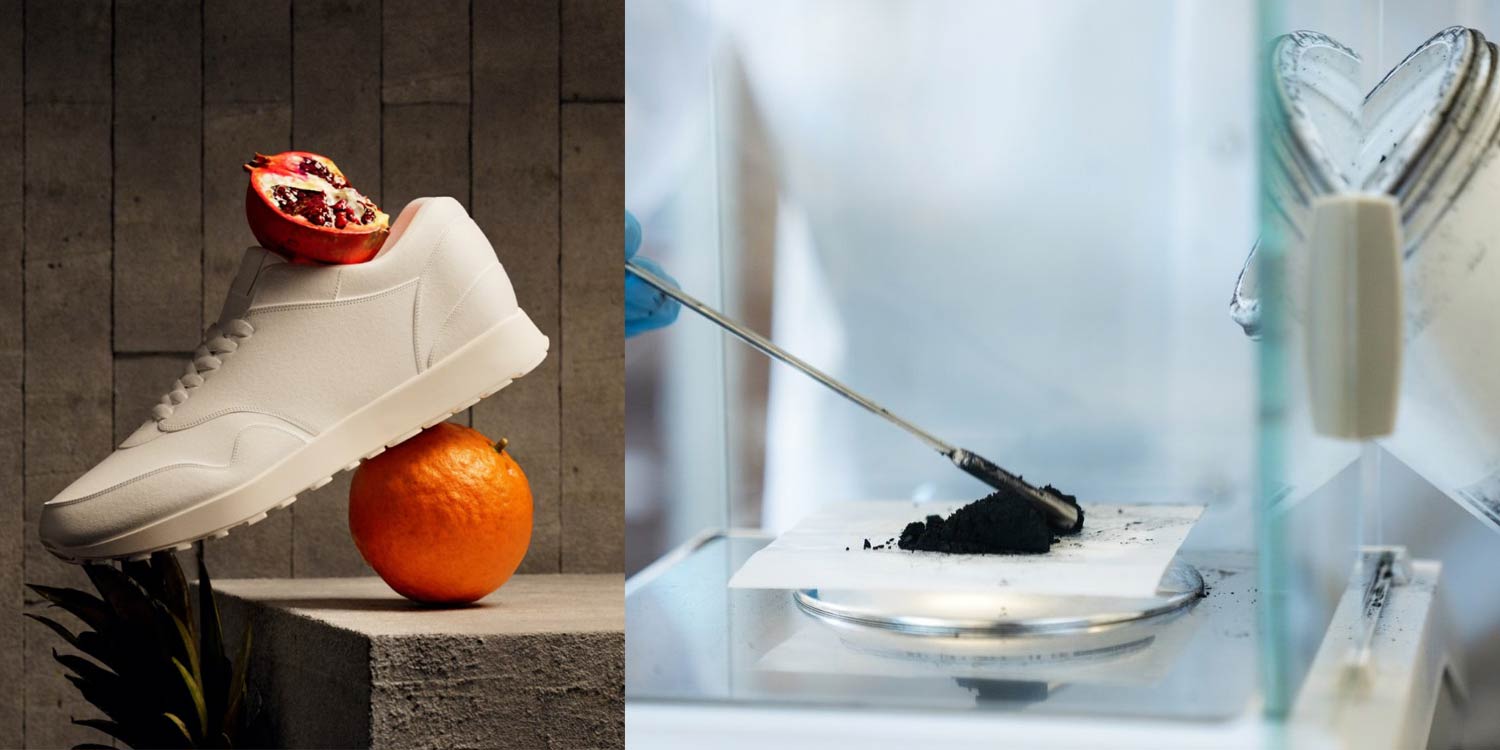
Leather-like materials from food waste
Bacteria really are the engine of our biotech-based textile revolution. Scientists are harnessing these humble microorganisms’ ability to excrete cellulose fibers from certain organic matter to create sheets of fabric. Organic matter being fed to these bacteria can even be extracted from our local food waste. This process is similar to that of mycelium. Bacterial nano-cellulose sheets are made by fermentation in a few weeks. The leather-like materials can then be customized by color, embossing and thickness in its growth. This has been piloted in many different parts of the world, and its success can really hint at a promising future where circular economies become a reality.
Chloe Tran and her company TômTex created a leather like material from coffee grounds and shell seafood waste. Designer Peter Do recently used it to create “leather” pants.
However, the most common feedstock used is fruit waste. The types of fruit varies depending on the region. Mexico-based Polybion uses a variety of industrial fruit waste, while Malai, in Southern India, utilizes coconut water to grow nanocellulose. These cellulose are later combined with hemp, banana, gump and resin to create cellulosic gelatin, which is then 3D-formed into sheets. Australian based Nanollose creates rayon fibers in the same vein.
…and Kombucha!
Another ingredient for bacteria’s feedstock comes from our favorite beverage when we are trying to have a health streak – Kombucha. Who would have thought actual clothes can be created out of this fizzy drink? Modern Synthesis, an early experimenter with kombucha recently raised $4.1 million to empower circular fashion with its microbial textile platform. Buchia Bio works to extract nanocellulose from the abundant kombucha yeast. This US company is using kombucha to make Shorai, a material that is claimed to be not only durable, but also water-, scratch-, sunlight- and flame-resistant.
When there is a cast for the best material to make suits for superheroes, I bet kombucha-based fiber would make a strong candidate.
–Jacqueline Pham
Related Articles
TômTex’s Vegan Leather is Gorgeous & Eco-Friendly
Vera Banas: ANDEL Co-Founder, Fulbright Scholar, and Materials Researcher
It’s Time to End Our Toxic Love Affair with Synthetic Fabrics
Where to Buy Eco-Friendly Ethical Sustainable Fashion

